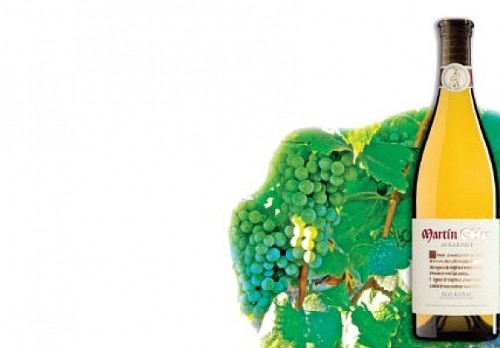There’s an interesting Spanish white wine that is a good go-to, warm-weather wine for the porch, patio and picnics. It’s also increasingly popping up on restaurant wine lists: Albariño. The relative high quality and low cost make Albariño an ideal wine for restaurateurs and their customers.
I first came across Albariño as a component of Portugal’s popular Vinho Verde. Albariño (called Alvarinho in Portugal) is the white grape used to make the dry white wine of Spain’s northwestern Rias Baixas, typically called simply Albariño. In fact, to be labeled Albariño in Spain the wine must be made from 100 percent Albariño grapes. It’s a fruity, flavorful, fragrant wine that commonly sells for $12 to $20. The thick skins of the Albariño grape contribute to Albariño’s intense aromatic qualities. Get a whiff of Albariño’s alluring pear and orange-blossom scents and you’ll be intrigued.
But, it’s also exciting on the tongue. Since Albariño usually isn’t fermented in wood casks, it tends to be exceedingly light on the palate. And yet, Albariño can have a slightly creamy texture like Chardonnay. Citrus, apple and peach flavors are abundant in Albariño, as are subtle notes of almond and candied lemon peel. Its razor-sharp acidity makes Albariño a good partner for seafood, much like Sauvignon Blanc. In fact, Albariño pairs so well with seafood that in Spain it’s been called the “wine of the sea.” One wine expert I know calls Albariño “Sauvignon Blanc on steroids.” And indeed, to many wine drinkers Albariño tastes like a blend of Sauvignon Blanc and dry Riesling, with maybe a skosh of Viognier thrown in—very vibrant.
One of my favorite examples of this lovely, quaffable wine is Martin Codax Albariño, which sells here for $12.99. It’s fermented in stainless steel, but also undergoes partial malolactic fermentation and is aged sur lie, giving it a creamy (but not oaky) flavor and texture. Burgans Albariño ($14.99) is another good, inexpensive introduction to this wine, and reminds me of the aforementioned Martin Codax, but with a bit more residual sugar and a tad more complexity. It’s medium-bodied, very crisp, with peach, green-apple and citrus flowers, along with hints of honey. For food pairings, I’d recommend shellfish of all sorts. Morgadío Legado Albariño ($14.99) has aromas of green apple and honeysuckle to entice you, along with kiwi and tangerine flavors combined with a dry, sharp minerality. It’s a bright, somewhat floral wine that’s nicely focused. Drink it with simple, grilled fish dishes.
At the higher end of the Albariño price spectrum are Morgadío Albariño 2009 ($19.99) and Pazo de Señoráns Albariño 2009 ($22.99). Morgadío Albariño is a bit more tropical than its Legado sister, with flavors of coconut, pineapple and blood oranges on the palate, along with traces of nutmeg and a slight smokiness—a very silky, elegant and festive wine. As for the crisp and clean-tasting Pazo de Señoráns Albariño 2009, it’s very aromatic on the nose, with tantalizing tropical-fruit flavors. Although somewhat round and creamy, the flinty dryness of Pazo de Señoráns makes me think it would be a perfect pairing for oysters, especially big fat Tottens from the Northwest coast.
Whatever you eat or don’t eat with Albariño, I urge you to go out and find yourself a bottle. It’s an easy-drinking wine with just a slight bit of festive effervescence for a warm summer day: the sort of wine that could transform a seaside clambake or picnic in the park into something special, or simply make sipping on the patio a little more memorable.
More by Ted Scheffler
-
Flavor on the Western Front
Nomad Eatery ups the ante for off-airport eats.
- Dec 13, 2017
-
Under the Christmas Tree
Holiday gifts for cooks, foodies and winos
- Dec 6, 2017
-
Spreading the Love
Amour Café creates simple yet scrumptious fare.
- Nov 29, 2017
- More »





